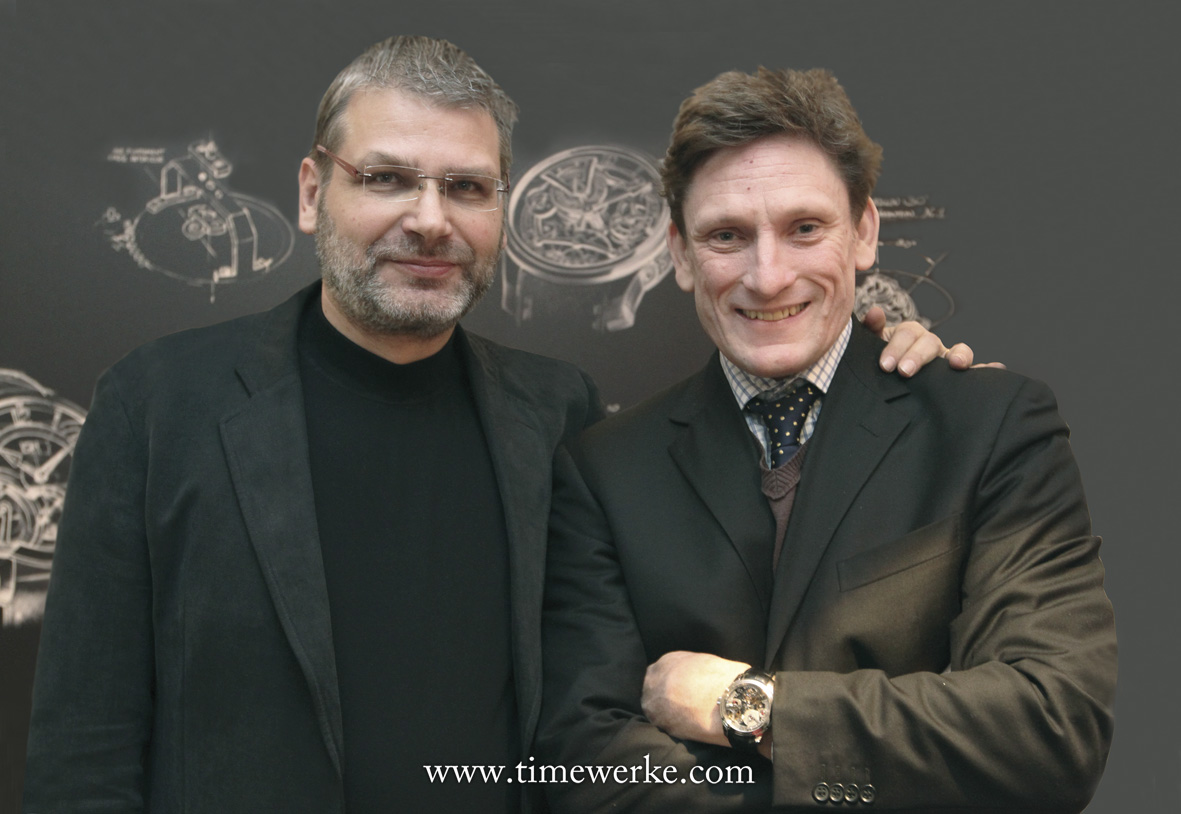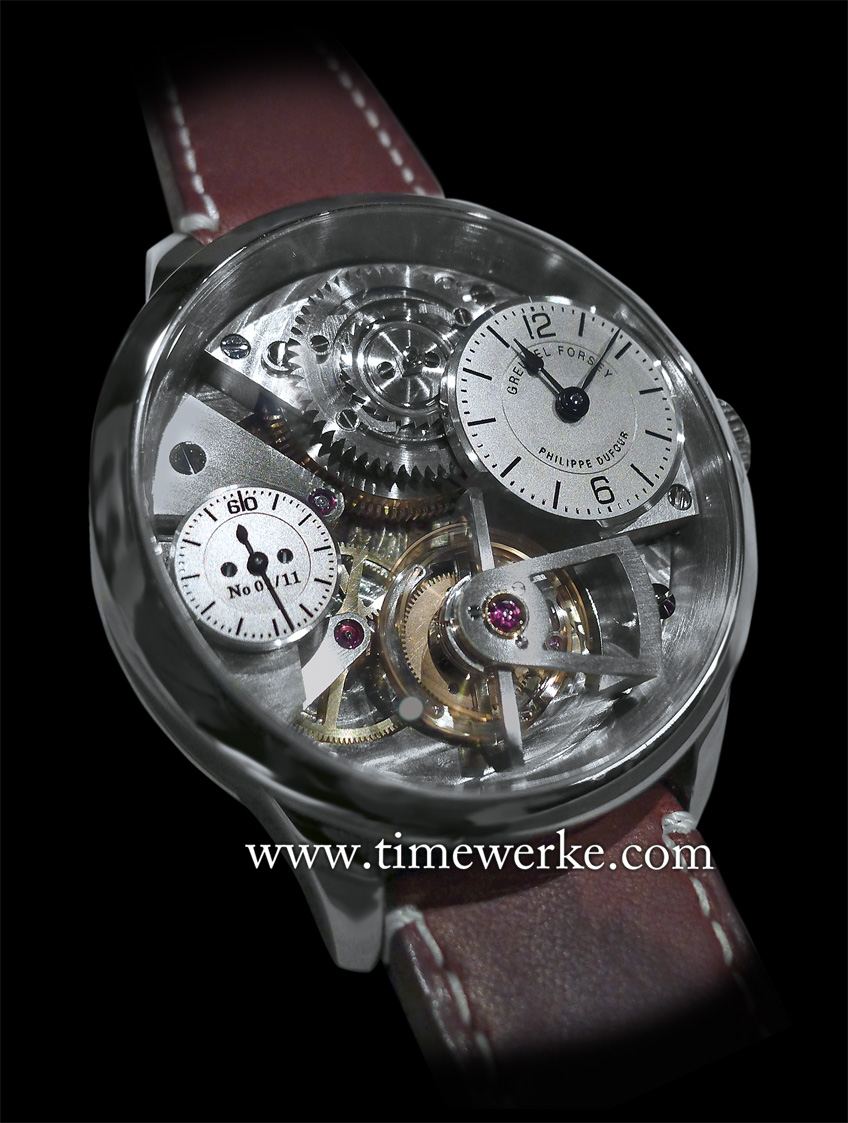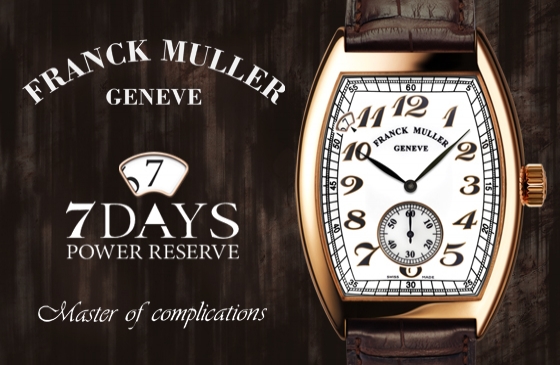
Master watchmakers Robert Greubel (left) and Stephen Forsey (right), founders of Greubel Forsey, are highlighting the urgent need to preserve traditional watchmaking techniques and skills through Le Garde Temps – Naissance d’une Montre. Both gentlemen including Philippe Dufour are what we would term the “guardians of ancestral watchmaking”. Photo: © TANG Portfolio. Elfa / Timmy. 2012 Salon International de la Haute Horlogerie.
Have you heard about the montre école or “school watch” that was sold for US$1.46 million? If you haven’t already heard, well, now you do.
This school watch was sold at Christie’s “Important Watches” auction held in Hong Kong on 30 May 2016 and it is the very first watch made for the project known as Le Garde Temps – Naissance d’une Montre.
The question is: what is Le Garde Temps – Naissance d’une Montre?
This is the French name for a noble watchmaking project backed primarily by Greubel Forsey which means “The Timekeeper – Birth of a Watch” when translated to English.
The main initiators of this project were Greubel Forsey namesake founders Robert Greubel and Stephen Forsey together with watchmaking legend Philippe Dufour.
Le Garde Temps – Naissance d’une Monte is about transmitting the ancestral watchmaking knowledge, techniques, movement construction, production and finishing to one selected individual who would then produce a complicated mechanical timepiece by hand.
After which, this individual would have the responsibility of transferring or communicating the knowledge and skills acquired to another younger generation of students, thereby perpetuating the ancestral watchmaking tradition.
Why did Greubel Forsey deem it necessary to have such a project?
Well, that is because the good folks at Greubel Forsey, their namesake founders, Robert Greubel and Stephen Forsey in particular, have the opinion that many manual skills and ancestral watchmaking techniques are being “forgotten” and will eventually be “lost” because of modern-day industrial watch production.
What’s even worse is that the impression many have of the so-called “watchmaker” of today is not one that invents and manufactures complex mechanisms.
He is viewed more like a technician who spends most of his time changing watch straps and batteries in quartz timepieces, as highlighted in Le Garde Temps – Naissance d’une Montre‘s booklet, Une Aventure Horlogère (A watchmaking adventure).
This is very much unlike watchmakers of the nineteenth century who generally crafted the mechanical watch movement components out from metal by hand using handheld tools. Moreover, some of these watchmakers even undertook the entire creation of the watch from A to Z.
Today, thanks to the industrial revolution and technological advances, the machine has “won”, having taken over human labour where movement component parts can simply be machined out of metal and even machine-finished.
Moreover, there is sub-division of labour where individuals only specialize in certain areas such as the placement of certain component parts, movement decoration and high-end handcraftsmanship like finishing.
The widespread use of industrial methods and processes can cause an entire heritage of traditional watchmaking knowledge and techniques to be lost, highlights Robert Greubel.

The montre école or “school watch” for Le Garde Temps – Naissance d’une Montre. This “school watch”, as seen in January 2015 at the Salon International de la Haute Horlogerie, was still in the works-in-progress stage. Michel Boulanger made this watch under the tutelage of master watchmakers Philippe Dufour, Robert Greubel and Stephen Forsey. Photo: © TANG Portfolio. Elfa / Timmy. 2015 Salon International de la Haute Horlogerie.
With this project, “… the [ancestral watchmaking] theory should then be put into practice and this person must then transfer the skills they acquire to young students,” as highlighted in Le Garde Temps – Naissance d’une Montre‘s booklet, which further adds that: “The project embarked upon two objectives: saving a skill and sharing it on a large scale.”
The selected individual for Le Garde Temps – Naissance d’une Montre, is Michel Boulanger, a teacher from a watchmaking school in Paris, whom we have termed the “chosen one”.
Boulanger made the montre école or “school watch” which features a tourbillon and he was guided by Robert Greubel, Stephen Forsey, Philippe Dufour and highly experienced team members at Greubel Forsey such as Didier Cretin.
Another article on timewerke.com that may be of interest:
i. Greubel Forsey: Le Garde Temps – Naissance d’une Montre “School Watch” sold for US$1.46 million.


